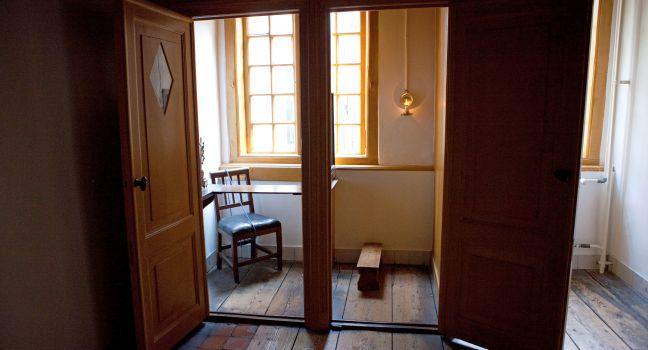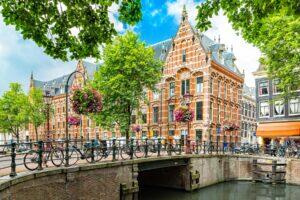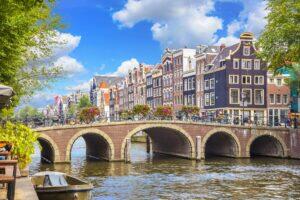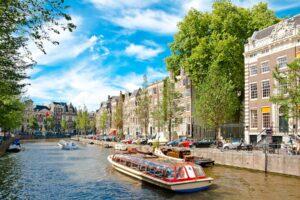Fodor's Expert Review Ons' Lieve Heer op Solder

With its elegant gray-and-white facade and spout gable—the block atop the building that looks like a funnel, which used to signify a warehouse or trade house rather than a residential property—this building appears to be another lovely 17th-century canal house, and on the lower floors it is. But tucked away in the attic is a clandestine place of Catholic worship, a schuilkerk (hidden church), one of the very few to survive. Catholic masses were officially forbidden from 1578, but the Protestant authorities in Amsterdam turned a blind eye, provided the churches were not recognizable as such from the outside. Restored to its 19th-century appearance, the chapel itself is a triumph of Dutch taste, with a magnificent old rose color scheme and marbled wood columns to match, a gorgeous green altar, and the Baptism of Christ in the Jordan (1716) painting by Jacob de Wit presiding over all.
The grandeur continues throughout the house, which was renovated... READ MORE
With its elegant gray-and-white facade and spout gable—the block atop the building that looks like a funnel, which used to signify a warehouse or trade house rather than a residential property—this building appears to be another lovely 17th-century canal house, and on the lower floors it is. But tucked away in the attic is a clandestine place of Catholic worship, a schuilkerk (hidden church), one of the very few to survive. Catholic masses were officially forbidden from 1578, but the Protestant authorities in Amsterdam turned a blind eye, provided the churches were not recognizable as such from the outside. Restored to its 19th-century appearance, the chapel itself is a triumph of Dutch taste, with a magnificent old rose color scheme and marbled wood columns to match, a gorgeous green altar, and the Baptism of Christ in the Jordan (1716) painting by Jacob de Wit presiding over all.
The grandeur continues throughout the house, which was renovated by merchant Jan Hartman between 1661 and 1663. The kitchen and chaplain bedroom remain furnished in the style of the age, and the day room looks as if it were plucked from a Vermeer painting. With its copper chandelier and marble Solomonic columns, it's one of the most impressive 17th-century rooms left in Amsterdam. The new part of the museum, on the other side of the alley, hosts temporary exhibitions.
READ LESS








